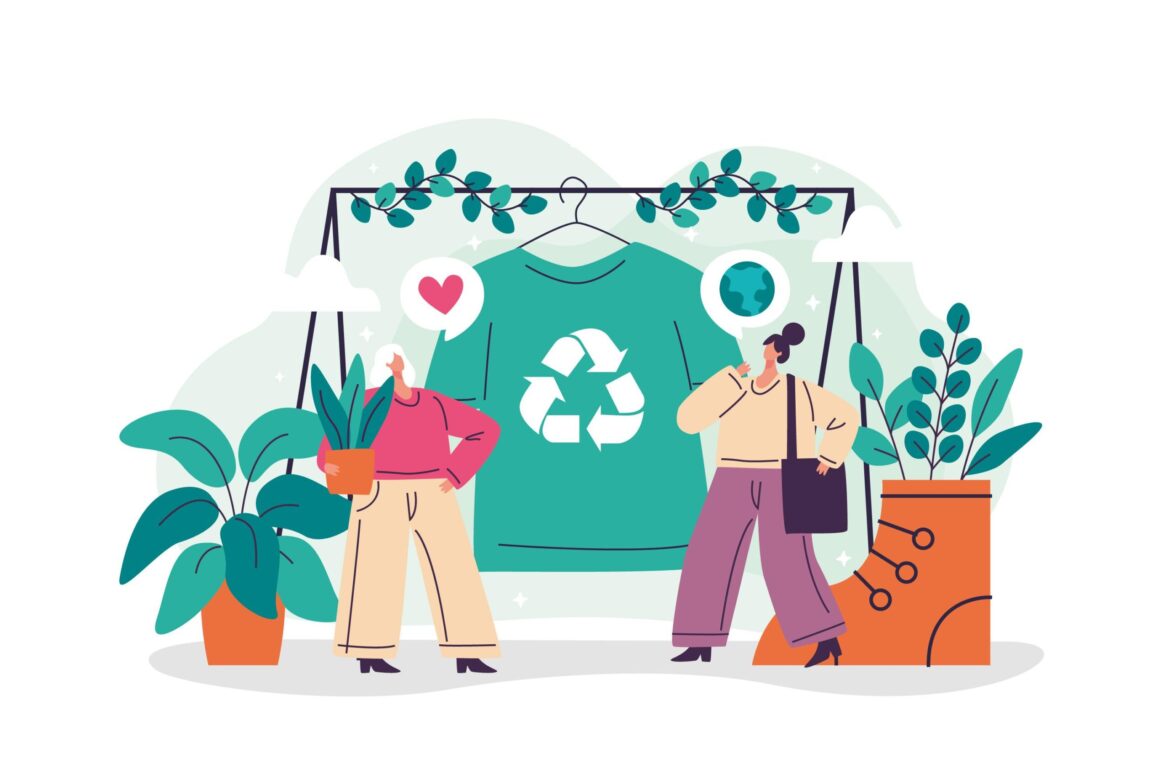The fashion industry is undergoing a transformative shift as sustainability takes center stage. With growing awareness about environmental issues and ethical practices, sustainable fashion has emerged as a powerful movement reshaping how we produce, consume, and think about clothing. From eco-friendly materials to ethical labor practices, this trend is not just a passing fad—it’s the future of style. In this blog post, we’ll explore the rise of sustainable fashion, its impact on the industry, and how you can be part of this positive change.
What is Sustainable Fashion?
Sustainable fashion refers to clothing that is designed, manufactured, distributed, and used in ways that are environmentally friendly and socially responsible. This includes:
- Eco-Friendly Materials: Using organic cotton, recycled fabrics, and biodegradable materials.
- Ethical Production: Ensuring fair wages, safe working conditions, and no child labor.
- Circular Fashion: Promoting recycling, upcycling, and second-hand shopping to reduce waste.
- Slow Fashion: Encouraging quality over quantity and reducing overconsumption.
Why Sustainable Fashion Matters
The fashion industry is one of the largest polluters in the world, contributing to 10% of global carbon emissions and 20% of wastewater. Fast fashion, characterized by cheap, disposable clothing, has exacerbated these issues. Sustainable fashion addresses these challenges by:
- Reducing Environmental Impact: Eco-friendly materials and production methods lower carbon footprints and water usage.
- Promoting Ethical Practices: Fair wages and safe working conditions improve the lives of garment workers.
- Encouraging Conscious Consumerism: Educating consumers about the impact of their choices fosters a more responsible approach to fashion.
Key Trends in Sustainable Fashion
- Eco-Friendly Fabrics: Brands are increasingly using materials like organic cotton, hemp, bamboo, and recycled polyester. These materials are not only sustainable but also durable and stylish.
- Second-Hand and Vintage Shopping: Thrift stores and online platforms like Depop and ThredUp are making it easier to buy pre-loved clothing, reducing waste and extending the life of garments.
- Rental Fashion: Clothing rental services are gaining popularity, allowing consumers to wear trendy outfits without the commitment of ownership.
- Transparency and Traceability: Brands are becoming more transparent about their supply chains, enabling consumers to make informed choices.
- Minimalist Wardrobes: The “less is more” philosophy is encouraging people to invest in timeless, high-quality pieces rather than fast fashion trends.
Leading Sustainable Fashion Brands
Several brands are leading the charge in sustainable fashion, proving that style and sustainability can go hand in hand:
- Patagonia: Known for its commitment to environmental and social responsibility, Patagonia uses recycled materials and promotes fair labor practices.
- Stella McCartney: A pioneer in sustainable luxury fashion, Stella McCartney avoids leather and fur and uses innovative eco-friendly materials.
- Eileen Fisher: This brand focuses on timeless designs, organic fabrics, and a take-back program to recycle old garments.
- Reformation: Reformation combines chic designs with sustainable practices, using deadstock fabrics and eco-friendly production methods.
The Role of Consumers in Sustainable Fashion
While brands play a crucial role, consumers also have the power to drive change. Here’s how you can embrace sustainable fashion:
- Buy Less, Choose Well: Invest in high-quality, versatile pieces that last longer.
- Support Ethical Brands: Research brands that prioritize sustainability and ethical practices.
- Shop Second-Hand: Explore thrift stores, consignment shops, and online platforms for unique, pre-loved items.
- Recycle and Upcycle: Donate or recycle old clothes instead of throwing them away.
- Educate Yourself: Stay informed about the impact of your fashion choices and advocate for change.
Challenges in Sustainable Fashion
Despite its growth, sustainable fashion faces several challenges:
- Higher Costs: Eco-friendly materials and ethical labor practices often result in higher prices, making sustainable fashion less accessible to some consumers.
- Greenwashing: Some brands falsely claim to be sustainable, misleading consumers.
- Scalability: Scaling sustainable practices while maintaining affordability and quality remains a challenge for many brands.
However, as demand for sustainable fashion grows, these challenges are being addressed through innovation, education, and collaboration.
How Sustainable Fashion Aligns with Renewable Energy
Just as sustainable fashion focuses on reducing environmental impact, renewable energy aims to create a cleaner, greener future. Both movements emphasize the importance of responsible consumption and innovation. To learn more about how renewable energy is shaping a sustainable future, check out our article on Renewable Energy: The Key to a Sustainable Future.
The Future of Sustainable Fashion
The future of sustainable fashion looks promising, with more brands and consumers embracing eco-friendly practices. Innovations like biodegradable fabrics, blockchain for supply chain transparency, and AI for reducing waste are set to revolutionize the industry. As sustainability becomes the norm, the fashion industry will play a pivotal role in creating a more equitable and environmentally conscious world.
Conclusion
Sustainable fashion is more than just a trend—it’s a movement toward a better future. By choosing eco-friendly and ethical clothing, we can reduce our environmental footprint, support fair labor practices, and promote a more responsible approach to fashion. Whether you’re a fashion enthusiast or a conscious consumer, embracing sustainable fashion is a step toward a greener, more stylish world.
Call to Action: Ready to make a positive impact? Start by exploring sustainable fashion brands and learning more about how renewable energy is shaping the future in our article on Renewable Energy: The Key to a Sustainable Future.

